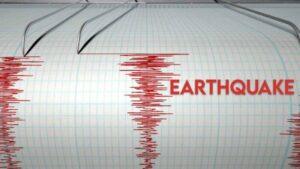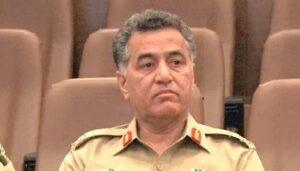Floods in the Chenab, Sutlej and Ravi rivers have devastated almost 1,400 villages in Punjab, displacing more than 1.2 million people.
Throughout Chenab, 991 villages and 769,281 people have been affected, while the explosion of the Ravi river has affected 80 villages and 74,775 residents, and the Sutlej has flooded 361 villages, displacing 392,768 people.
Together with human evacuations, more than 148,000 cattle have moved to safer areas, with 234 treatment fields with established animals to provide medical support. According to the National Authority for Disaster Management (NDMA), they moved to more than 210,000 people to safer places, including 25,000 accommodated in rescue camps, according to Thursday.
The Chenab and Jhelum rivers have increased to extremely high and very high flood levels, respectively, flooding the vulnerable districts, said the flood prognosis division of the Provincial Disaster Management Authority (PDMA) Flood (FFD).
28 اگ ECTION صبح 6 بجے ڈیمز، دریاؤں کے اہم مقاما پر پانی کے بہاؤ سیلابی سطح کی صور Der ۔ال۔ pic.twitter.com/srdigmelhs
– FFDLAHORE (@FFDLHR) August 28, 2025
The Chenab River is experiencing extremely high flood levels in the head Khanki, Qadirabad and Malara Allows down.
In Khanki, the river is in an extremely high flood situation with flows that reach 859,000 CUSECs. Similarly, in the head of Qadirabad, the discharge has increased to 996,000 Cusecs, almost 200,000 Cusecs above its design capacity, also classified as an extremely high level of flooding.
Understand flood levels
According to FFD, flood levels are classified into five stages:
- A “low flood level” is where river flows are just above normal and generally contain inside the banks.
- A “medium flood” indicates a stronger increase in water, which represents risks for low villages and crops near the riverbank.
- When a “high flood” is declared, the situation becomes dangerous since water can overflow or exert severe pressure on embankments.
- While, a “very high flood indicates a critical stage where a large -scale flood is expected.
- The most severe category is an extremely high flood, where river discharges exceed the safe design limits of barriers and embankments.
Read: Heartland under the siege of water
Chenab River
Due to the swelling of the Chenab River, more than 50 villages in sambrial have submerged, while the number of deaths per drown has increased to at least eight. The extremely high flood wave is expected to arrive on Friday to Muzaffarh. Residents are increasingly concerned due to the bad condition of protective embankments, with cracks reported in Rangpur, Muradabad, Bhattianwali Basti, Thatta Sialan and Sankhi.
Ravi River
Moroever, the water flow in the Ravi River continues to increase, reaching 189,000 Cusecs in Shahdara and it is expected to reach 200,000 Cusec in the next few hours. The waters of the floods have risen on the banks of the river, spilling in nearby settlements around Shahdara. Mosques in the area have announced evacuation calls as water levels increase. The district administration has cleared 22 villages in five Tehsils de Lahore.
According to Punjab Pdma DG Irfan Ali Kathia, in Jassar, the Ravi River has reached extremely high flood levels with flows to 139,000 cusecs, Express news reported. In Balloki Headworks, the flows are 93,000 CUSECs, marking a medium level flood.
In the Shakargarh district, hundreds of acres of farmland have been submerged, dozens of houses have been collapsed and at least three people have lost their lives.
In Ganda Singh Wala, the Sutlej River is experiencing an extremely high and dangerous flood with water flows registered in 261,000 Cusecs. In Sulemanki’s head, the flows have reached 109,000 CUSECs, causing a medium level flood.
Read more: Gates Dona $ 1 million for floods of Pakistan
In Vehari, the protective embankments in Lakha Soldira and Jatiera have collapsed, allowing the waters of the floods to enter the villages of Lakha Sildira and Jatiera while cutting the access of the road to more than 40 settlements.
The district authorities said that more than 50,000 people have been affected only in Vehari, with more than 12,000 transferred to safer places and tents settlements established in Farooqabad, Sahuka and Rakh Jamlera.
In Bahawalnagar, several temporary protective dikes have also collapsed due to the strong current of floods.
Meanwhile, the Indo River remains relatively quiet in Punjab, with low flood levels reported in Rajanpur, although officials warn that a high flood wave is expected to reach Kot Mithan in three or four days. The Police and the District Administration have begun to relocate the residents of the Katcha areas, with established relief camps and rescue equipment. In Sindh, the Indo in Taunsa, Guddu, Sukkur, Kotri and Islam Wail remain at low flood levels.
According to the latest alert of the Pakistan Meteorology (PMD) issued today, the next 12 to 48 hours remain critical, with stronger rain forecasts in Lahore, Gujranwala, Sialkot, Jhelum, Rawalpindi, Murree, Azad Kashmir and Gilgit-Baltist.
PM underlines the need to improve water storage capacity
Prime Minister Shehbaz Sharif has requested collective efforts to address the recurring challenge of natural disasters, particularly floods, in the coming years.
By chairing an informative session in Nanowal on the devastation caused by recent floods, the prime minister has emphasized the need to improve water storage capacity to mitigate sudden floods. He said that Diamer Bhasha and Mohmand dams can serve as key projects, adding that water deposits could also be developed in Chinast.
Prime Minister Shehbaz said that federal and provincial governments have the ability to generate resources and find solutions to the crisis. He stressed that, together with the national and provincial authorities of Disaster Management, all allied departments must demonstrate preparation to address natural calamities.
Expressing pain for the loss of lives and properties, the prime minister praised the Armed Forces for working closely with the civil administration in rescue and relief operations.
The president of NDMA, Lieutenant General Inam Haider, Malik, reported the meeting on the damage scale, noting that this year’s monsoon had been more intense and prolonged than in previous years, with high flood waters recorded in the Chenab, Sutlej and Ravi rivers.
Today early, Prime Minister Shehbaz arrived in Lahore, where Punjab Prime Minister Maryam Nawaz received it.
Cm Maryam visits the areas affected by floods
Punjab Prime Minister Maryam Nawaz inspected the situation of flooding in Shahdara while traveling by boat, where the authorities informed him about the last development.
Speaking on the occasion, he said that Punjab faced an emergency flood after “unprecedented rains and the release of water from India after his dams were filled.”
He praised the efforts of the administration, noting that the commissioners, the attached commissioners, the rescue teams and the Department of Health had worked tirelessly.
“If there had been no preparation, the damage would have been much greater. Such flood has happened after 38 years. Each life is precious and people have moved to safe places,” he added.
شدید Ance qu 4 usion
یہ ایک غیر معمولی صورتحال ہے
“
“
ان omine
ریسکیو ، ہیلتھ نے نے اچھا کیا
وزیر اعظم نارووال … pic.twitter.com/98py3MCGBX
– PTV News (@PTVNewsoFFECorial) August 28, 2025
“By the grace of Allah, we were saved from mass destruction, although deeply regrets the losses that have still occurred.”
Public advice
The Punjab Pdma Help Commissioner, Nabeel Javed, has ordered the commissioners and commissioners who remain present in the field, underlining that PDMA is ensuring continuous coordination throughout the province.
He said that the evacuations of the areas affected by floods must be carried out as quickly as possible, since protecting lives and properties remains the main priority and responsibility. All relevant rescue and help institutions have been placed in maximum alert, without space for negligence.




